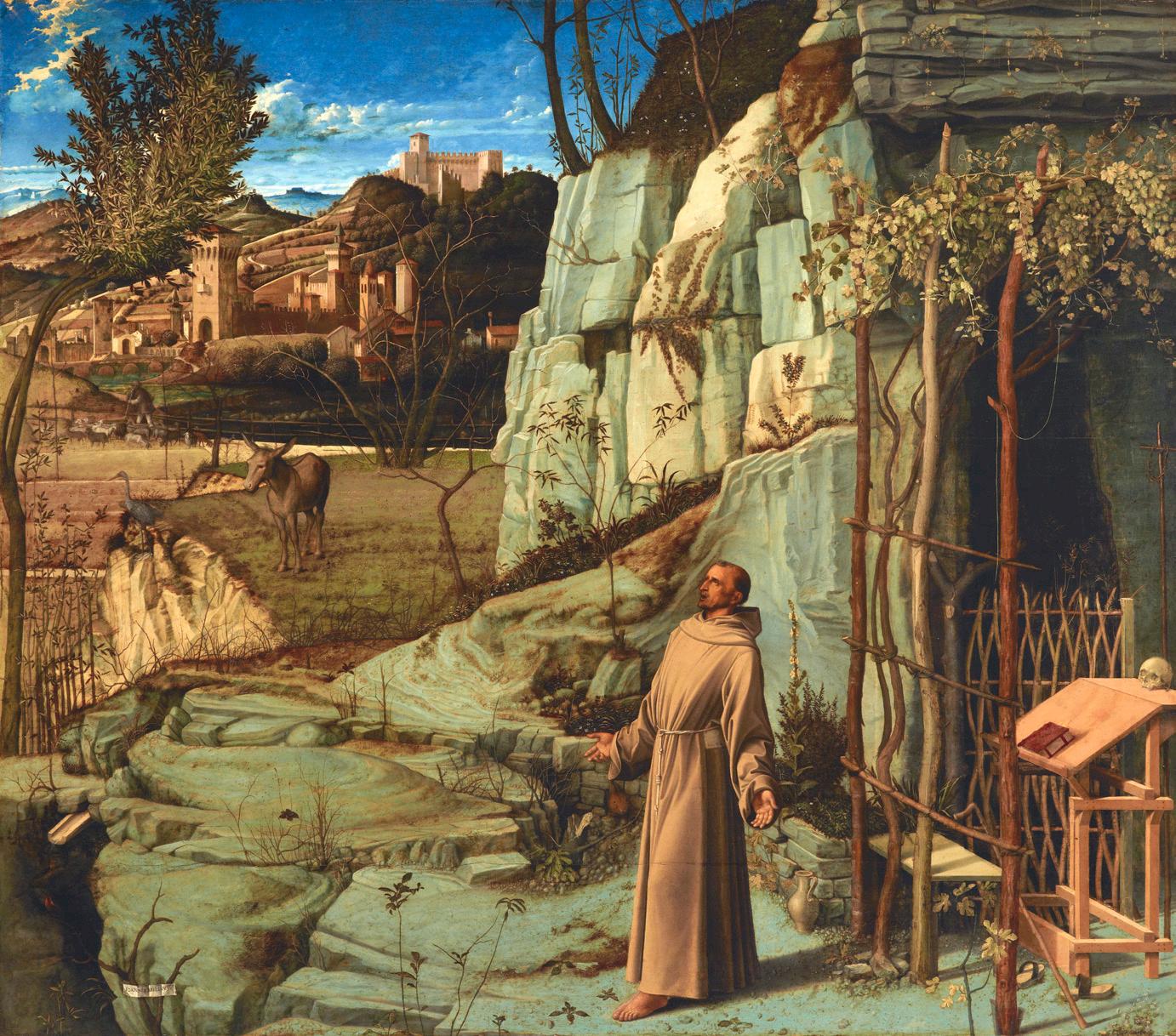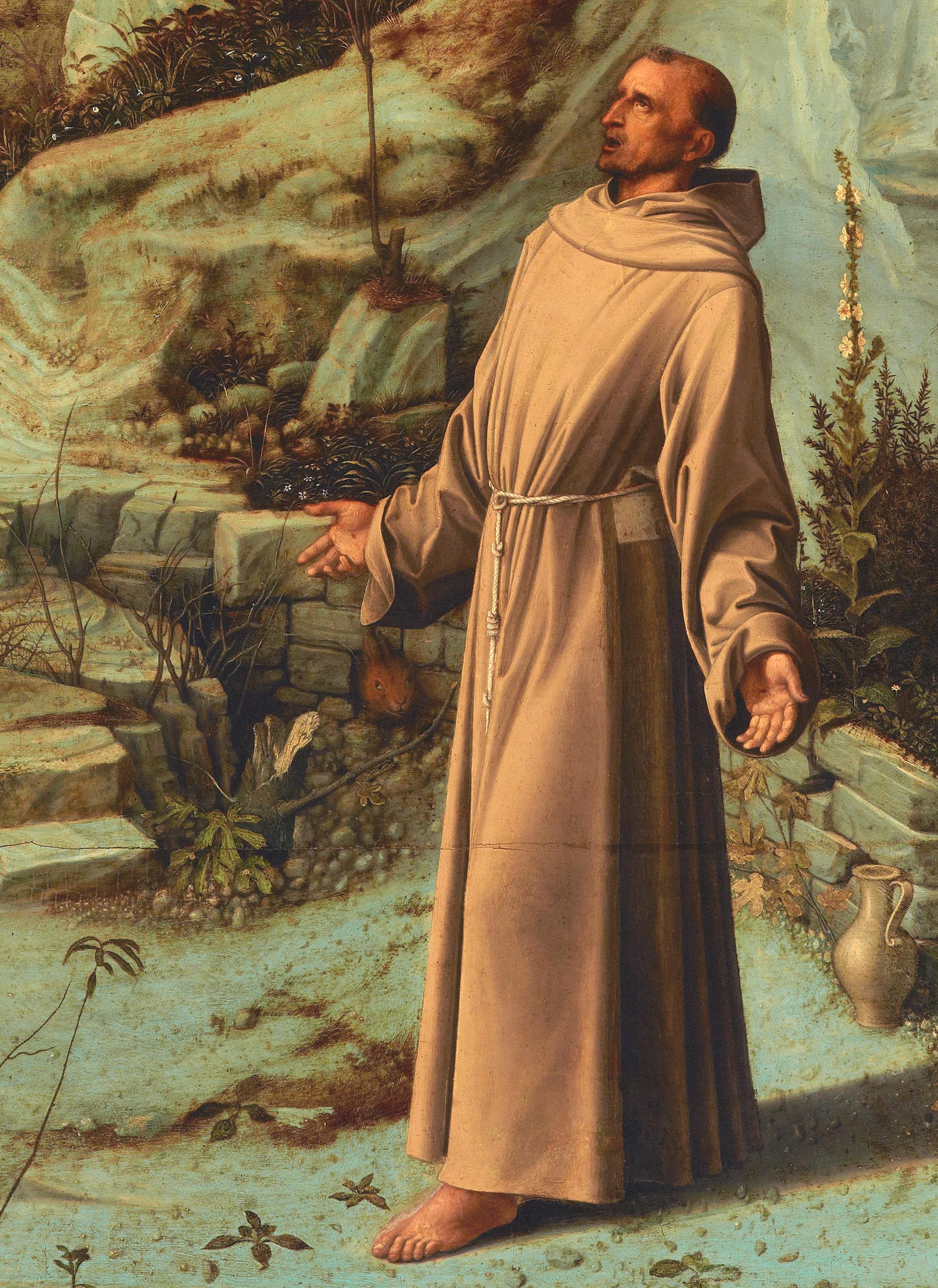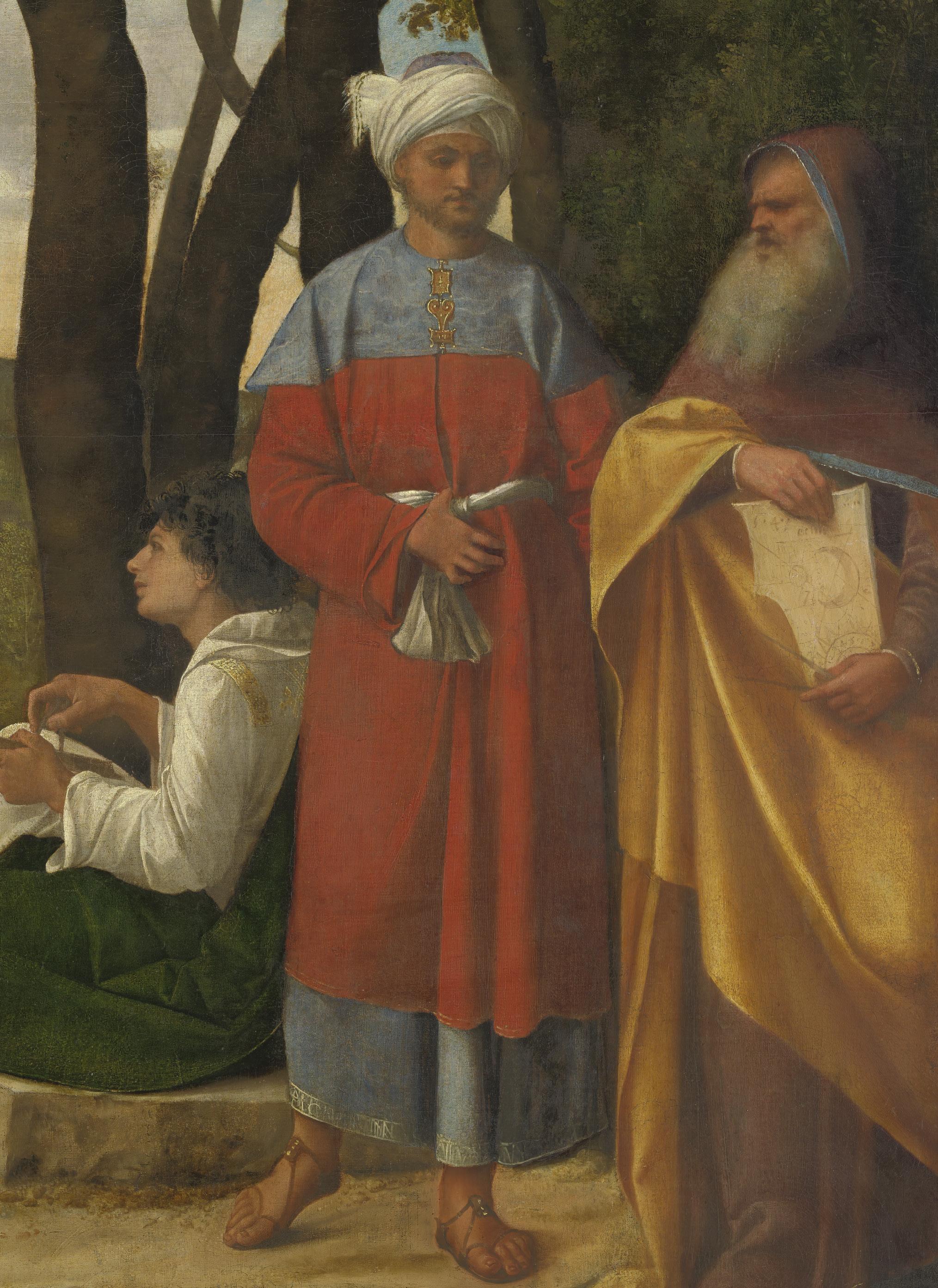BELLINI and GIORGIONE





The Frick Collection, New York in association with D Giles Limited




Technical analysis of the painting has resolved an issue that arose from Michiel’s description. Michiel states that the painting “was begun” by Giorgione and “finished” by Sebastiano del Piombo. This assertion was questioned by Crowe and Cavalcaselle in 1871. 66 Art historians have tried to identify Sebastiano’s contribution to Giorgione’s painting but have not reached a unanimous conclusion. Michiel seems to suggest that the painting was not finished when Giorgione died (in 1510) and that Sebastiano completed it.67 Following Giorgione’s design, Sebastiano may have painted the two standing philosophers;68 or just their clothes;69 or, instead, the seated young philosopher was painted by Sebastiano;70 or the landscape.71 Many scholars have addressed the meaning and implications of Michiel’s note. Wilde came to the conclusion, in 1932, that “no tangible basis can be found for Michiel’s statement and that it should be left out of the discussion.”72 Pietro Zampetti wrote that “with regard to the collaboration with Sebastiano del Piombo, of which Michiel speaks, it is very difficult to say what it consists of and problematic to trace its elements with certainty: in fact, the work appears admirably unitary.”73 And Jaynie Anderson said that “indeed, we may doubt Michiel’s testimony that Sebastiano made any significant contribution

 Fig. 21. Santa Maria dei Miracoli, Venice
Fig. 21. Santa Maria dei Miracoli, Venice
Taddeo’s children followed suit; so the tomb was never built.The family continued to be buried in front of the altar of St. Jerome, commissioned byTaddeo before his death in 1540. Four generations of the Contarini family seem to have been buried in front of this altar—for a century, between 1540 and the 1650s.161
No trace of an altarpiece with St. Jerome or of the Contarini tombs survives today in the interior of Santa Maria dei Miracoli (dge,�� 22). However, in his 1581 guidebook to Venice, Francesco Sansovino (1521–1586) writes that in the church of Santa Maria dei Miracoli “Giovanni Bellini painted there a Saint Jerome in the Desert.”162 This is further confirmed in a guidebook of 1664, in which Marco Boschini (1602–1681) writes: “entering the church, through the main door, on the left is the panel with Saint Jerome, and on the sides of the said altar there are Saints Francis and Clare; all by the hand of Giovanni Bellini.”163 Roger Rearick has argued convincingly that Bellini’s St. Jerome in the Desert was the painting now at the Uffizi in Florence (dge,�� 23), previously in the Papafava collection in Padua in the nineteenth century and subsequently in the Contini Bonacossi collection.164 He also proposed, persuasively, that the saints Francis and Claire at the sides of the altarpiece—which Boschini describes, but not Sansovino—were, in fact,
